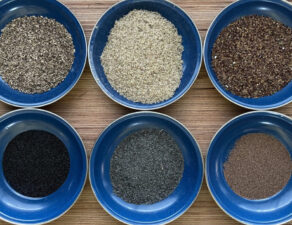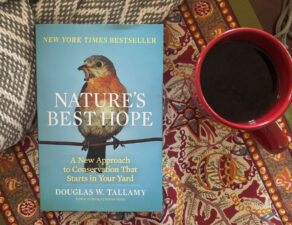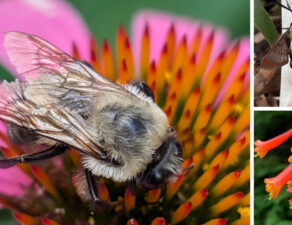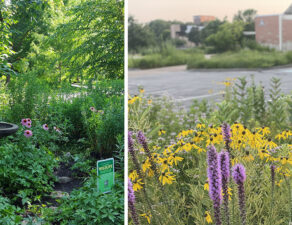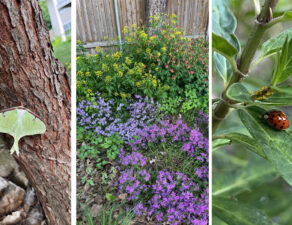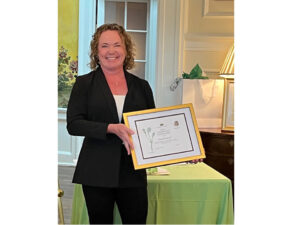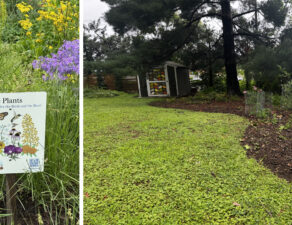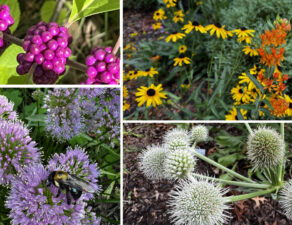
Many native plants have great winter structure and interest. Many also play an essential role in pollinator winter survival. Native bees and other beneficial insects use standing plant stems to lay eggs, which are protected over the winter to emerge in the spring. Skip the fall cleanup and leave your plants standing until early spring for the most vibrant assortment of bees and pollinators next year!
Black-eyed Susan (Rudbeckia) seed heads provide food for songbirds in winter, and are striking in contrast to the golden winter color of little bluestem (Schizachyrium scoparium) behind.


Purple coneflower (Echinacea purpurea) is popular with both gardeners and goldfinches. This easy-to-grow perennial is a popular part-shade species.
Learn more about native plant selections for winter interest and wildlife benefit in our series Native Plants at Noon!
